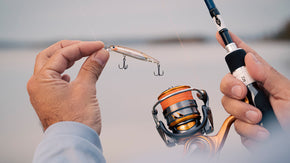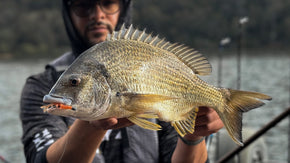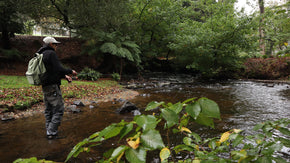Posted 19th August 2022
Mega Southern Bluefin Tuna


By Mark Gercovich
“Remember the good old days”, is a phrase many anglers use when discussing how a certain fishery, location or species used to be. In most cases is used to lament on how good things use to be in the past. However, there are a few examples of fisheries that, with either good management, stocking or environmental successes, are actually better now than they used to be. One such example is the southern bluefin tuna fishery in southern Australia. Fished to almost extinction in the 1960s and 70s, virtually unknown except in a few small areas throughout the 80s and 90s, Southern Bluefin Tuna made a big resurgence back onto the angling scene in the mid 2000s.
In the initial seasons it was all about an autumn-early winter bite, usually well offshore, whether you were targeting the big barrels (80-100kg plus fish) or the smaller school sized fish (8-15kg). Here in Victoria, Portland was the tuna capital with some anglers also getting fish from nearby Port Fairy and Warrnambol. As the seasons progressed, and more and more people began looking for them, the fish continued to be taken from ports further east. Apollo Bay through Bass Strait, past Port Phillip Heads and across to Phillip Island/Westernport Bay, anglers were encountering bluefin tuna.
 As we moved into the mid 2010’s things got even better. The same stretches of coastline began receiving a summer tuna run and from being a bit of a novelty, has increased its regularity the past few seasons.Mainly only school fish, but with a greater average size than the winter school fish of around 10-30kg, it has added another exciting element to the fishing calendar. Another benefit of the summer run is how close these fish come to shore. Fish are usually encountered in 20-30m of water but can be found even closer.
As we moved into the mid 2010’s things got even better. The same stretches of coastline began receiving a summer tuna run and from being a bit of a novelty, has increased its regularity the past few seasons.Mainly only school fish, but with a greater average size than the winter school fish of around 10-30kg, it has added another exciting element to the fishing calendar. Another benefit of the summer run is how close these fish come to shore. Fish are usually encountered in 20-30m of water but can be found even closer.
This allows the everyday angler in smaller boats to be able to encounter these fine game fish. Finding the fish in summer is a bit of a different proposition. Unlike big winter bust ups with heaps of birds diving and feeding often in combination with seals and dolphins, usually there are only a handful of birds, sometimes even just one or two, on the fish. Other times no birds are observed, but the fish can be seen just cruising in a big school on the surface, with just a slight ripple giving away their presence.
 Calm days help to spot this activity and a keen set of eyes are important to locating these “nervous water” surface ripples. Long casts are essential for many reasons. A long cast minimises the chances of spooking fish, plus allows the fish more opportunity and distance to find and chase down the lure. Short casts can result in the fish following but turning away at the boat before hooking up. The 20 Saltist Hyper “Power Rounder” and “Multi-tool” rods matched to Saltist LTD 4000 are perfect for casting distances and are light enough to use all day but have plenty of backbone to stop these hard fighting school-sized fish.
Calm days help to spot this activity and a keen set of eyes are important to locating these “nervous water” surface ripples. Long casts are essential for many reasons. A long cast minimises the chances of spooking fish, plus allows the fish more opportunity and distance to find and chase down the lure. Short casts can result in the fish following but turning away at the boat before hooking up. The 20 Saltist Hyper “Power Rounder” and “Multi-tool” rods matched to Saltist LTD 4000 are perfect for casting distances and are light enough to use all day but have plenty of backbone to stop these hard fighting school-sized fish.
For those who even find it hard to access the closer summer fish, there are plenty of charter boats that operate along the coast offering the chance to get out and experience the amazing sights that can be seen on the tuna grounds. It is really worth getting out to experience with your own eyes, as well as the thrill of hooking up to one of these cold water speedsters.
















